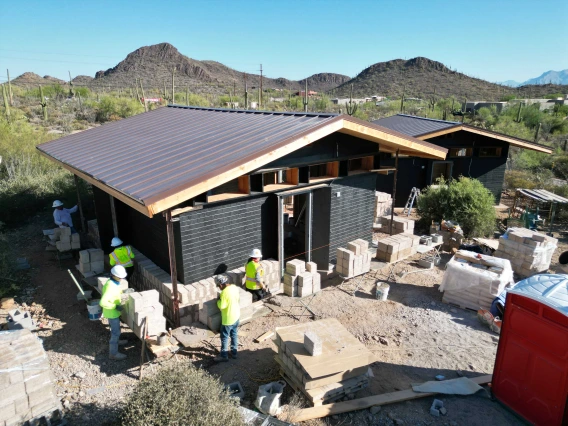Architecture Lecturer Bill Mackey’s Book ‘Guess That Arroyo’ Sheds Playful Light on the Tucson Region Watershed
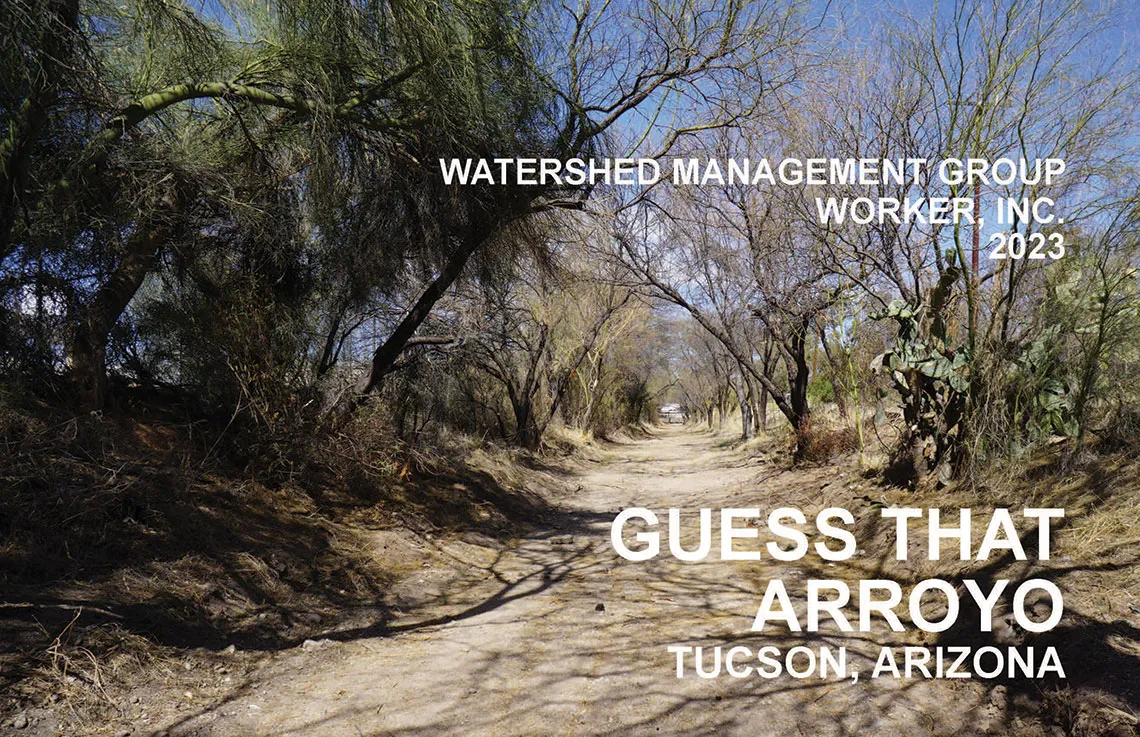
“Arroyos on the desert are magic,” writes University of Arizona Lecturer in Architecture Bill Mackey in the introduction to his new bilingual book Guess That Arroyo: Tucson.
Just where those arroyos are, what state they’re in and whether a reader can figure out which arroyo is which is the subject of the book, which was a collaboration between Mackey and the Watershed Management Group's River Run Network, whose lead on the project was Christian Aguilar Murrieta, a Master of Landscape Architecture student at the UArizona College of Architecture, Planning and Landscape Architecture.
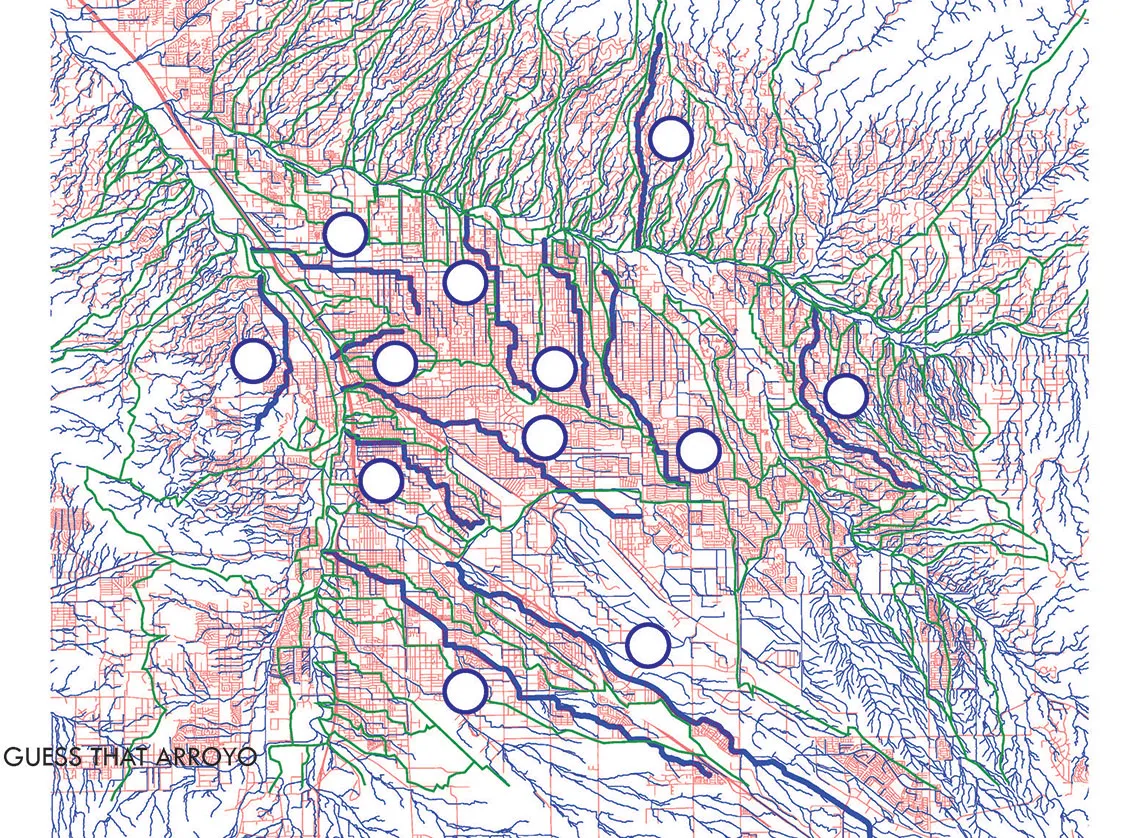
Tucson watershed map with 12 arroyos readers may identify from the photos in the book.
Image by Bill Mackey.
The book, which was supported by a grant from the Southwestern Foundation for Education and Historic Preservation, is a continuation of Mackey’s Guess That… series that also includes Guess That Intersection and Guess That Shopping Center.
“The aim of the series is to depict what humans have created here and offer notions of why,” says Mackey. “Much of my work is about placing the mundane at the forefront. Instead of producing a book on fancy architecture, I produce books on convenience stores. Both are culturally relevant.”
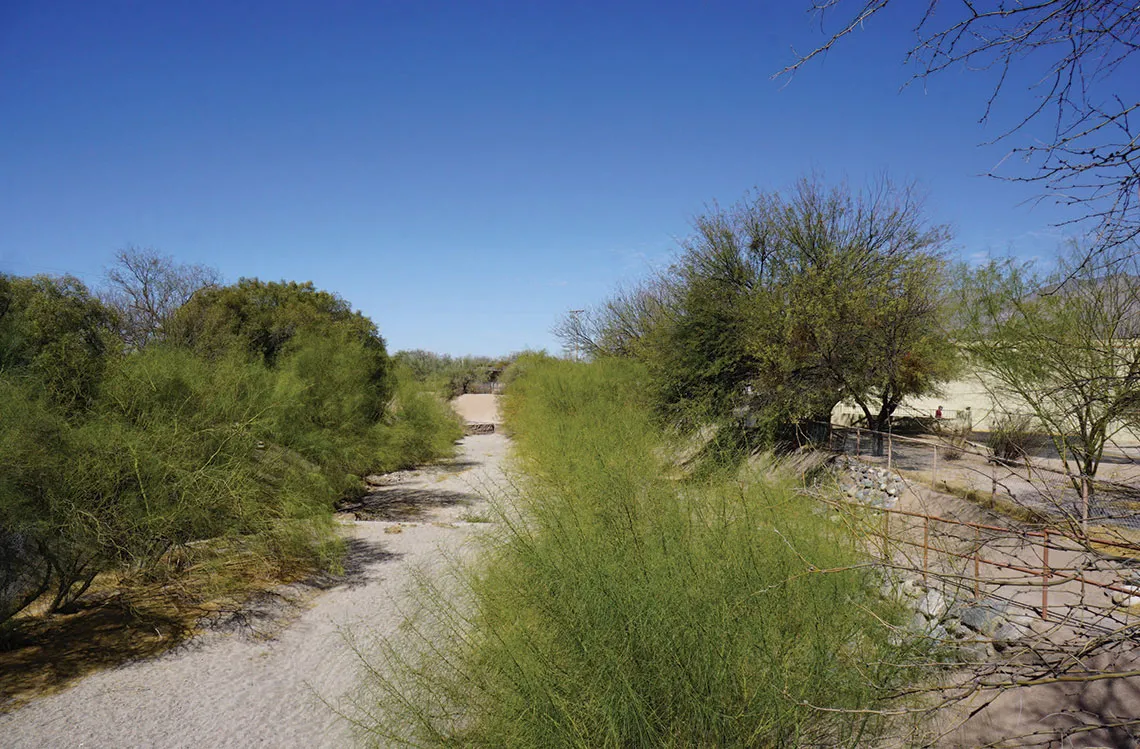
A more natural, preserved arroyo in Tucson.
Photo by Bill Mackey.
The relevance of arroyos—or washes—in Tucson is also important. “Urban arroyos are our constructions,” writes Mackey. Yet, “[w]e no longer rely on these arroyos for sustaining crops of maiz, tomatoes or papas. We really aren’t sure what they are for. There is no vision or goal.”
To think more intimately about Tucson’s arroyos, before creating the book Mackey led a series of arroyo walks with students and teachers from Sky Island High School and Wakefield Middle School and also collected stories from the community of Tucson and beyond. What he found—in the arroyos and stories both—are places that serve a multitude of purposes: wastewater management, wildlife habitat, a place to escape from the anxiety of the city, human residences, a place to watch water make its ephemeral way through the desert.
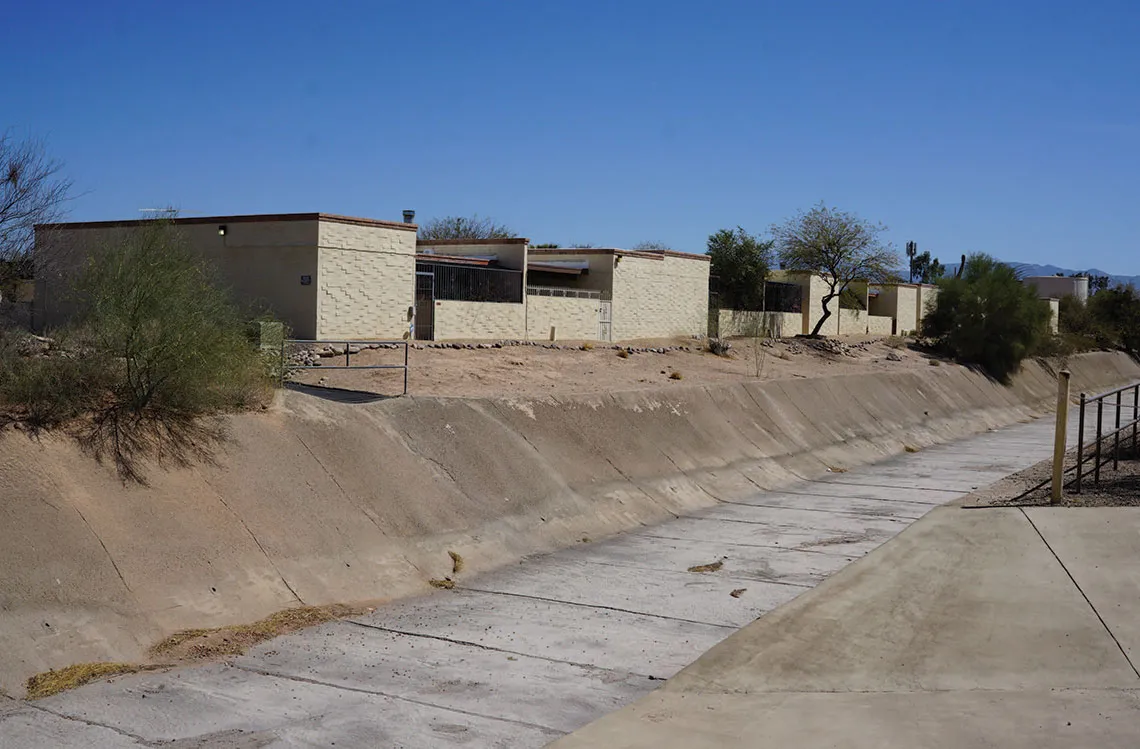
A much less natural Tucson arroyo.
Photo by Bill Mackey.
In addition to Mackey’s introduction, Guess That Arroyo includes four maps and 12 series of photographs depicting 12 different arroyos. The first three maps show the watersheds in Tucson, the streets of Tucson and the arroyos of Tucson, respectively. “We purposefully displayed these without any context to highlight the specific geometry or form each takes on as their own,” writes Mackey. “You can see the negotiations that occur between the watershed and the streets and the arroyos where the geometries have sudden shifts and incongruencies.”
The fourth map contains everything together with the 12 arroyos. “These are the 12 you need to identify,” instructs the book. “Study the photographs and make a guess as to which arroyo is which. Write the number of the arroyo in the circle, and if you are curious, send us an image of the map with your answers, and we will let you know if you are right or not.”
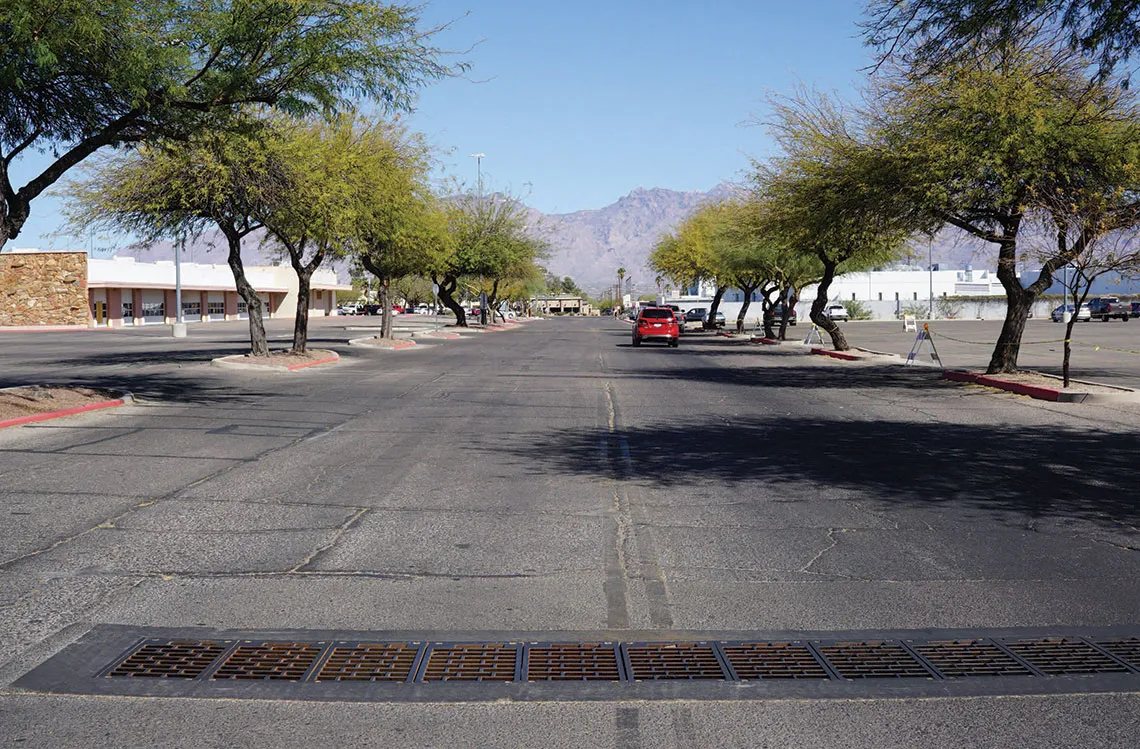
A much, much less natural arroyo in Tucson.
Photo by Bill Mackey.
“Architectural investigations, outside of program or clients, are an off-beat balance between idealism and realism, with a heavy dose of cynicism, for me,” says Mackey. “It is about the experience and documentation of the landscape and then coming up with goofy ideas or ways of presenting it that hopefully makes the audience ponder, ‘What do I think about this? Can we do better?’”
Mackey led an exuberantly pondering audience in the Guess That Arroyo game at the book release celebration on March 31 at the Watershed Management Group in midtown Tucson. The prize? A free copy of the limited-edition, full-color book. The larger outcome? A deeper if not more playful appreciation of the arroyos that define and are defined by Tucson’s built and natural environments.
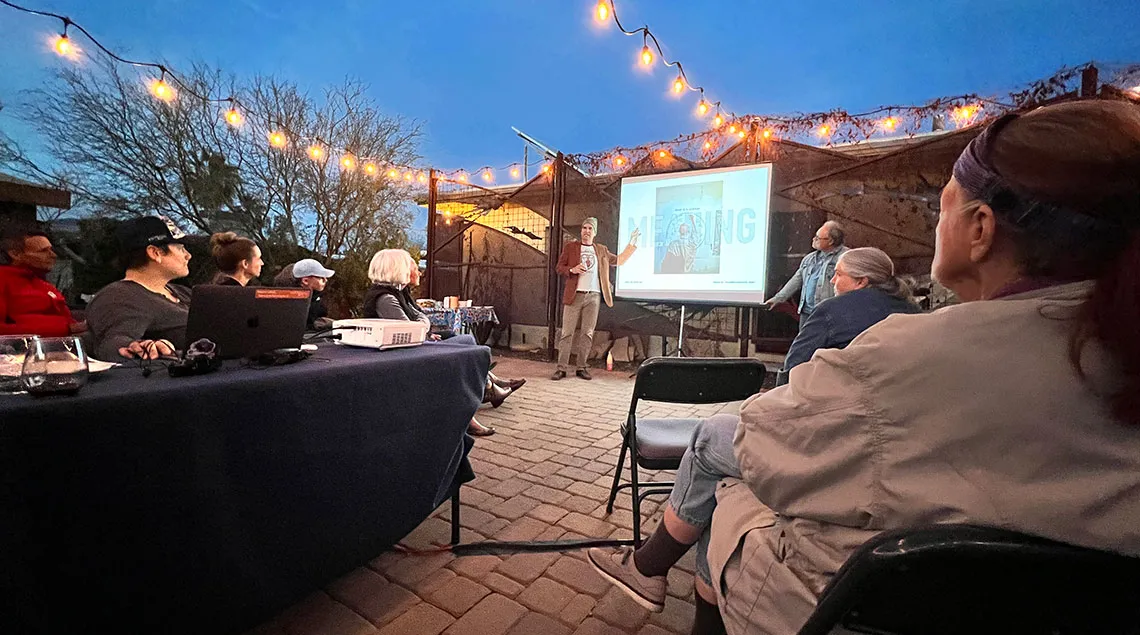
Architecture Lecturer Bill Mackey quizzes the audience at the Guess That Arroyo: Tucson release and celebration hosted by Watershed Management Group.
Photo by Simmons Buntin.
Mackey, a 1995 graduate of the UArizona Master of Architecture program, has been teaching at CAPLA since 2005. He also maintains an art and architecture practice, Worker, Inc. His research investigates human-constructed environments, primarily the spaces that exist between private properties. This research combines methodologies from fine arts, architecture, urban design and social sciences and results in books, pamphlets, exhibits and performances that utilize text, graphics, sculpture, sound and video.
Learn more about Bill Mackey at his faculty profile or faculty page, or explore ways to support CAPLA faculty research and creative scholarship.



